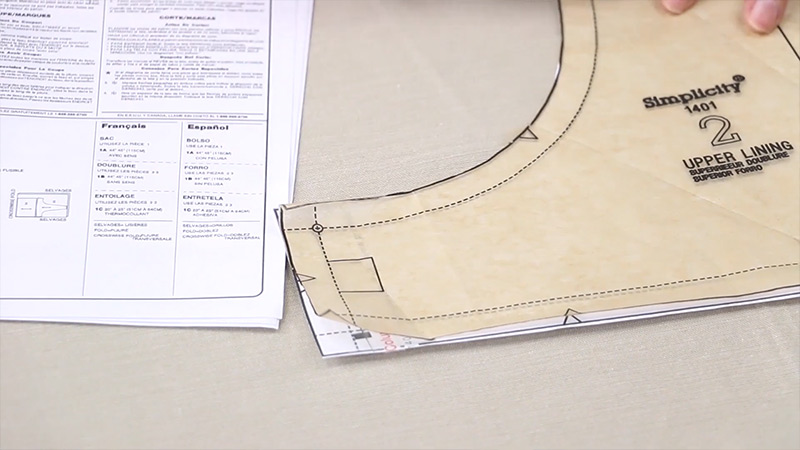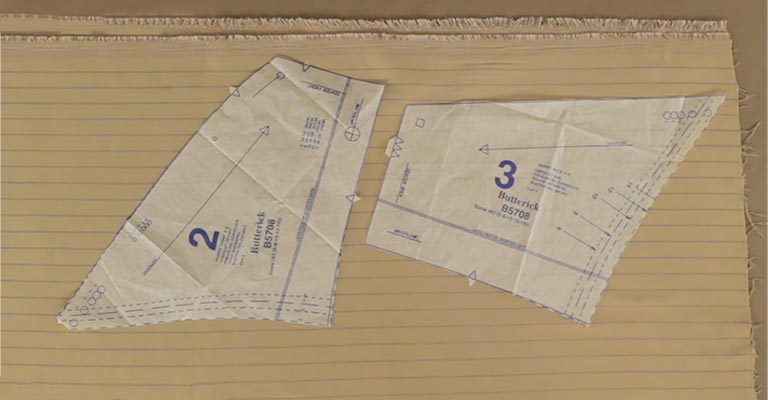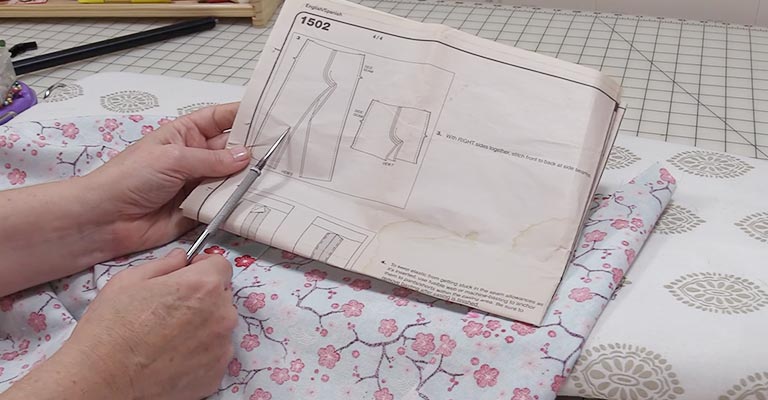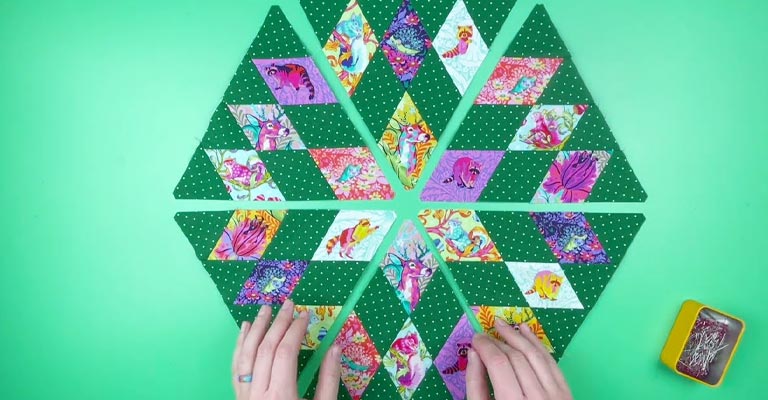In the realm of sewing, the term “view” might seem like a simple word, but it holds the key to endless creative possibilities. A “view” in a sewing pattern represents far more than just a design option; it’s the gateway to personalization and individuality.
Sewing patterns offer a multitude of views, each a distinct design variation for a garment. These views empower sewers to craft clothing that mirrors their unique style, needs, and preferences.
Whether it’s altering sleeve lengths, neckline styles, or hem options, understanding what a “view” means is the first step toward fashioning garments that are as one-of-a-kind as the individuals who create them.

What Does View On A Sewing Pattern Mean?
In the realm of sewing patterns, a “view” denotes a specific design option for a garment achievable using the pattern’s shared set of template pieces. Sewing patterns frequently provide multiple stylistic choices for a single garment, each being a distinct “view.”
These views allow customization by altering elements such as sleeve styles, necklines, lengths, or embellishments. Views are usually labeled with numbers or letters for easy identification.
By selecting a particular view, one can follow the accompanying instructions and employ the associated pattern pieces to craft a garment with their preferred design elements.
Views empower sewers to tailor garments to their style, offering versatility and personalization within a single pattern.
What Is the Significance of Views in Sewing Patterns?

The significance of views in sewing patterns is multifaceted and plays a crucial role in the world of sewing. Here’s why views are highly significant:
Customization
Views allow sewers to customize garments according to their style, preferences, and body measurements. You can choose from a variety of design elements like sleeve lengths, necklines, hems, and more to create a garment that reflects your individuality.
Versatility
Sewing patterns typically include multiple views for a single garment. This versatility means you can use the same pattern to create a range of different looks, from casual to formal, summer to winter, and everything in between.
Creativity
Views provide a canvas for creativity. They encourage sewers to experiment with design elements, mix and match, and explore new techniques. This fosters a sense of artistic expression and innovation in sewing projects.
Skill Development
By working with various views, sewers can enhance their sewing skills. Each view may involve different techniques or challenges, offering opportunities for learning and growth in the craft.
Sustainability
Sewing pattern views can be instrumental in sustainable fashion practices. They allow for repurposing and upcycling of old clothing, reducing waste and contributing to a more environmentally friendly approach to fashion.
Community and Inspiration
Sewing pattern views create a sense of community among sewers. Sharing your projects and ideas, as well as seeking inspiration from others, is facilitated by the diverse options provided by views.
Economic Value
Views offer economic value by allowing sewers to create multiple garments from a single pattern. This is a cost-effective way to build a versatile wardrobe without purchasing numerous patterns.
How Can You Identify and Select the Right View in a Sewing Pattern?

Identifying and selecting the right view in a sewing pattern is a key step in creating a garment that matches your style and needs. Sewing patterns often offer multiple design options, and choosing the most suitable one is crucial for a successful project.
Here’s a step-by-step guide to help you identify and select the right view in a sewing pattern:
Examine the Pattern Envelope
Start by closely examining the front of the pattern envelope. Look for images or illustrations that depict the different views available for the pattern. These visuals offer an initial glimpse of the design variations.
Read the Pattern Description
Review the pattern description provided on the envelope. This description usually provides a brief overview of the pattern, including the types of garments it can create and the key design elements of each view.
Check the Back of the Envelope
Turn the pattern envelope to the back. Here, you’ll find more detailed information about each view. This section may include drawings or photographs of the views, along with lists of distinctive design elements unique to each option.
Consider Your Style and Purpose
Think about the specific garment you want to make and its intended purpose. Consider the season, occasion, and your personal style. Are you looking for a casual, formal, or versatile piece? Different views may cater to different needs.
Review Fabric and Notion Requirements
Carefully review the fabric and notion requirements for each view. Some views may require particular fabric types, closures, or embellishments. Ensure that the view you choose aligns with the materials you have or plan to use.
Consult the Instruction Booklet
Inside the pattern envelope, you’ll find an instruction booklet. This booklet contains detailed information about each view, including step-by-step instructions for constructing the garment in that view. This can help you understand the construction process.
Consider Mixing and Matching
Don’t limit yourself to a single view. If none of the views precisely match your vision, consider mixing and matching elements from different views.
For example, you could combine the bodice from one view with the sleeves from another to create a unique and personalized garment.
Take Accurate Body Measurements
Ensure that your body measurements align with the pattern’s sizing chart. Different views may have slight variations in fit, so choose the view that best matches your measurements for a flattering result.
Make a Mock-Up or Toile (Optional)
If you’re unsure about the fit or design, consider creating a mock-up or toile in a less expensive fabric. This allows you to test the view and make any necessary adjustments before cutting into your final fabric.
Seek Inspiration and Guidance
Explore sewing blogs, forums, or social media for inspiration. Other sewers may have completed projects using the same pattern and view, providing real-world examples of how the finished garment looks.
What Are Some Examples of Views in Sewing Patterns?

Sewing patterns are like blueprints for crafting garments, and within these patterns lie a world of creative possibilities known as “views.” These views are the heart of sewing patterns, offering a plethora of design options for sewers to explore.
Here are some examples of the diverse views you might encounter in sewing patterns:
Sleeve Length Variations
Views can range from short sleeves, perfect for summery tops, to elegant long sleeves for colder seasons, offering options for year-round wear.
Neckline Styles
Different views may feature diverse neckline options, from classic round necks to chic V-necks, cowl necks for a touch of elegance, or trendy off-the-shoulder styles.
Hem Length Options
Views often include various hem lengths, such as mini, knee-length, midi, or maxi, allowing you to create garments tailored to specific occasions and seasons.
Collar Styles
Sewing patterns offer various collar choices, including classic point collars, charming Peter Pan collars, or sleek stand-up collars for shirts and dresses.
Pocket Variations
From practical patch pockets to more refined welt pockets or inseam pockets, views provide options for adding functionality and design to your clothing.
Closure Choices
Views can feature different closure methods, including zippers, buttons, snaps, or ties, giving you flexibility in how your garment opens and closes.
Gathered or Pleated Details
Some views include gathering or pleating details, which can add texture and depth to your garment, providing a touch of sophistication.
Sash or Belt Variations
Patterns with sashes, belts, or ties allow you to cinch the waist and add a stylish accent to your outfit, emphasizing your figure.
Pant Leg Styles
For pants and trousers, views can encompass various leg styles like straight, wide, or tapered legs, offering diverse silhouettes to suit your preferences.
Dart and Seam Details
Views may incorporate different dart placements or seam lines, affecting the fit and visual appeal of the garment.
Yoke and Bodice Variations
Sewing patterns for tops and dresses may feature diverse yoke and bodice styles, such as princess seams, empire waists, or peplum details, allowing for tailored looks.
Cuff Options
Views for shirts and blouses might include options like button cuffs, French cuffs, or simple folded cuffs, allowing you to adjust the style according to your taste.
Ruffle, Flounce, or Frill Accents
Some views incorporate charming ruffles, flounces, or frills along hems, necklines, or sleeves, imparting a feminine and decorative touch.
Color-Blocking Variations
Views can provide opportunities for color-blocking, letting you mix and match fabrics to create unique and visually striking garments.
Hood or Collar Variations
Outerwear or jacket patterns may feature views with different hood styles or collar options, including stand-up collars or shawl collars for added warmth and style.
How Can Sewing Pattern Views Enhance Your Creative Sewing Projects?
Sewing pattern views are the key to elevating your creative sewing projects. They open up a world of possibilities for customization and individuality.
Here’s how sewing pattern views can enhance your creative sewing projects:
Diverse Design Options
Sewing patterns typically offer multiple views for a single garment. Each view has distinct design elements like sleeve lengths, necklines, and hems. This diversity allows you to choose the design details that align with your creative vision.
Personalization
With sewing pattern views, you can personalize your creations. Tailor garments to match your unique style, whether it’s casual, formal, vintage, or contemporary. This personal touch ensures that each project is a reflection of your individuality.
Seasonal Adaptation
Views cater to different seasons and occasions. Whether you’re sewing for summer or winter, you can select the appropriate view to suit the climate and event, ensuring your wardrobe is versatile.
Mix and Match Possibilities
Views are not rigid boundaries; they serve as creative starting points. You can mix and match elements from different views to craft a garment that’s entirely your own. For example, combine a blouse’s bodice from one view with the skirt from another to create a unique dress.
Skill Development
Sewing pattern views offer opportunities to develop and hone your sewing skills. If a view involves a new technique or design element you’re less familiar with, using it as part of your project allows you to learn and practice, ultimately expanding your sewing abilities.
Sustainability and Upcycling
In an era of sustainability, sewing pattern views can help you repurpose and upcycle old clothing. By adding new design elements or altering existing ones, you can breathe new life into garments that might otherwise go to waste.
Sewing Community Engagement
Sewing pattern views also provide a platform for engagement with the sewing community. Sharing your projects, ideas, and insights with fellow sewers on social media, blogs, or forums can offer inspiration and foster a sense of belonging within the creative sewing community.
Unleash Creativity
The world of sewing pattern views is a playground for creativity. It’s where your imagination takes flight, and your unique ideas come to life. By exploring different views and experimenting with designs, you can express your creativity to the fullest.
FAQs
What is a view in a sewing pattern?
A view in a sewing pattern represents a specific design variation for a garment, providing customization options for sewers.
Can I combine elements from different views?
Yes, you can creatively mix and match elements from different views in sewing patterns to craft a unique and personalized garment.
How can I use views to enhance my sewing projects?
Utilize views to create garments that reflect your style, maximize your sewing skills, and contribute to sustainable sewing practices.
Are views only available in clothing patterns?
Views are commonly found in clothing patterns but can also be present in patterns for accessories and home decor projects.
Can I use views to repurpose or upcycle old clothing?
Yes, views can inspire you to transform old clothing by adding new design elements or altering existing ones.
To Recap
In the world of sewing, the concept of a “view” on a pattern is far from being a mere technicality. It embodies the heart and soul of creativity in the craft.
As we conclude our exploration of what a view on a sewing pattern means, we recognize its profound significance. Views are not just design options; they are the vehicles of individual expression and personal style.
They are the threads that weave together versatility, customization, and sustainability. Views enable sewers to transform a simple piece of fabric into a unique and personalized masterpiece, proving that the power of creativity truly lies in the details.
Embrace the views, and let your sewing projects become your canvas for self-expression and endless possibilities.
Leave a Reply